
Soil Science Annual
Scope & Guideline
Bridging science and sustainability in soil studies.
Introduction
Aims and Scopes
- Soil Fertility and Management:
Research focuses on enhancing soil fertility through organic amendments, microbial interactions, and the application of fertilizers. This includes studies on nitrogen transformation, the utilization of biochar, and the effects of various soil conditioners. - Soil Health and Quality Assessment:
The journal publishes studies on soil quality indicators and health assessments, emphasizing the relationship between soil properties and ecosystem functions. This includes research on soil microbial communities and enzymatic activities. - Environmental Impact Studies:
Papers often explore the environmental impacts of soil management practices, pollution, and land use changes. This includes assessing soil pollution, erosion, and the effects of agricultural practices on soil ecosystems. - Soil Classification and Characterization:
Research on soil classification systems and the physical, chemical, and biological properties of various soil types is a core area. This includes studies on alluvial soils, peat soils, and soils of specific regions. - Innovative Methodologies in Soil Science:
The journal encourages the use of advanced methodologies such as machine learning, spectral data analysis, and geostatistics to analyze soil properties and predict environmental outcomes.
Trending and Emerging
- Sustainable Soil Management Practices:
There is an increasing focus on sustainable practices, such as the use of organic amendments, biochar, and microbial inoculants, to enhance soil health and productivity while mitigating environmental impacts. - Climate Change and Soil Resilience:
Research on the impacts of climate change on soil properties and the adaptive strategies for soil management is on the rise, highlighting the urgent need to understand and improve soil resilience in changing climates. - Technological Integration in Soil Research:
The application of advanced technologies like machine learning, remote sensing, and spectral data analysis to soil science is trending, allowing for more precise assessments of soil properties and predicting future changes. - Microbial Ecology and Soil Health:
Emerging studies are increasingly exploring the role of soil microbiomes in promoting soil health and fertility, emphasizing the importance of microbial diversity and function in sustainable agriculture. - Soil-Plant Interactions:
Research focusing on the interactions between soil properties and plant growth is gaining traction, particularly in the context of enhancing crop yields and resilience through improved soil management.
Declining or Waning
- Traditional Soil Fertility Techniques:
There is a noticeable decline in research focused solely on conventional soil fertility techniques, such as basic NPK fertilization, as newer, more integrated approaches gain traction. - Studies on Soil Erosion without Technological Integration:
Research on soil erosion assessment that lacks modern technological applications (e.g., GIS and remote sensing) has become less prevalent, as the field shifts toward more sophisticated methods for studying soil dynamics. - Focus on Historical Soil Studies:
Papers that solely focus on historical or classical studies of soil properties without contemporary relevance or application have decreased, indicating a shift towards current and practical soil management issues. - Single-Crop Studies:
Research concentrating exclusively on single-crop impact studies is waning, as there is a growing trend towards understanding multi-crop systems and their interactions with soil health. - Basic Soil Microbiology without Environmental Context:
Basic studies on soil microbiology, detached from their environmental implications or applications, are becoming less common, reflecting a move towards interdisciplinary research that connects microbial dynamics with broader ecological outcomes.
Similar Journals

EURASIAN SOIL SCIENCE
Advancing soil science for a sustainable future.EURASIAN SOIL SCIENCE, published by PLEIADES PUBLISHING INC, is a premier journal dedicated to advancing knowledge in the fields of soil science and earth-surface processes. With an ISSN of 1064-2293 and an E-ISSN of 1556-195X, this journal has been a key resource for researchers and professionals from its inception in 1992 and continues to thrive as it converges toward 2024. Situated in the United States, EURASIAN SOIL SCIENCE has achieved notable recognition, attaining a Q2 ranking in both Earth-Surface Processes and Soil Science categories as of 2023. Its Scopus rankings further underscore its importance, with Earth and Planetary Sciences placing it at #81/179 and Agricultural and Biological Sciences ranking it at #80/159. Engaging a global audience, this journal publishes cutting-edge research articles, reviews, and case studies that address critical issues related to soil health, conservation, and management. Though currently not open access, the journal offers valuable insights and fosters collaboration among scientists and practitioners, underscoring its vital role in enhancing the understanding of soil dynamics and sustainability.

EGYPTIAN JOURNAL OF SOIL SCIENCE
Fostering Scholarly Discourse in Soil ResearchEGYPTIAN JOURNAL OF SOIL SCIENCE is a renowned publication dedicated to advancing the field of soil science, particularly within the context of Egypt and the broader regions of the Middle East and North Africa. Published by the NATIONAL INFORMATION DOCUMENTATION CENTER, ACADEMIC SCIENTIFIC RESEARCH & TECHNOLOGY, this journal aims to disseminate high-quality research and innovative practices related to soil management, conservation, and sustainable agricultural practices. With an emphasis on empirical studies, reviews, and methodologies relevant to soil health and productivity, this journal serves as an essential resource for researchers, professionals, and students alike. Although specific access options are not highlighted, the journal’s commitment to promoting scholarly discourse ensures that important findings within soil science are made available to wider audiences, contributing significantly to environmental science, agronomy, and ecological preservation.
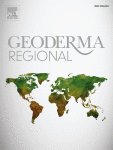
Geoderma Regional
Pioneering insights into soil dynamics and management.Geoderma Regional is a premier scholarly journal dedicated to advancing the field of Soil Science. Published by Elsevier in the Netherlands, this journal serves as a vital platform for disseminating high-quality, peer-reviewed research that spans the complexities of soil management, behavior, and the implications of soil processes on environmental sustainability. Since its inception in 2014, Geoderma Regional has achieved an impressive position within the academic community, holding a Q1 ranking in the field of Soil Science, placing it among the top 20% of journals in its category according to SCOPUS rankings. This journal is particularly distinguished for its significant contributions to the nexus between agriculture and biological sciences, reflected in its rank of #33 out of 159 in this field with a commendable 79th percentile. Researchers, professionals, and students alike will appreciate the journal's commitment to open discourse and innovative research agendas as it aspires to enhance our understanding of soil dynamics, addressing critical issues facing our planet.
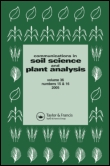
COMMUNICATIONS IN SOIL SCIENCE AND PLANT ANALYSIS
Elevating the Standards of Soil and Plant ResearchCOMMUNICATIONS IN SOIL SCIENCE AND PLANT ANALYSIS, published by Taylor & Francis Inc, is a prestigious journal dedicated to advancing research in the fields of agronomy, crop science, and soil science. Established in 1970, the journal has maintained a significant presence over the years, with a commitment to publishing high-quality, peer-reviewed articles that contribute to the understanding of soil and plant interactions. With an impressive Q2 ranking in both Agronomy and Soil Science, it positions itself as a vital resource for researchers, professionals, and students alike, keen on exploring innovative solutions to contemporary agricultural challenges. Although it currently does not provide open access, the journal ensures wide dissemination through its established subscription services. The journal's focus on empirical research, methodologies, and technological advancements in soil management and plant nutrition makes it an essential platform for disseminating knowledge and fostering discussions within the scientific community. Located in the heart of Philadelphia, USA, it remains a significant contributor to the global dialogue on sustainable agriculture and environmental stewardship.
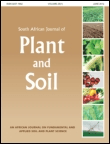
South African Journal of Plant and Soil
Pioneering insights into plant and soil management.South African Journal of Plant and Soil is an esteemed academic publication dedicated to advancing the fields of Ecology, Plant Science, and Soil Science. Published by TAYLOR & FRANCIS LTD in the United Kingdom, this journal has been a vital resource since its inception in 1984, providing a platform for innovative research and scholarly articles that address critical issues in plant and soil management. With a current impact factor placing it in the Q3 category according to the 2023 rankings, it occupies an influential position within the academic community, especially amongst researchers focused on agricultural and environmental sciences. Although not an open-access journal, it remains accessible to a broad audience through libraries and institutions that recognize its value in facilitating ecologically and environmentally focused discussions. The journal's ongoing commitment to publishing high-quality research ensures that it plays a pivotal role in nurturing knowledge and fostering advancements in sustainable practices across southern Africa and beyond.
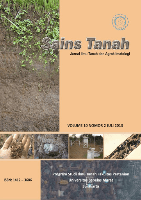
SAINS TANAH
Advancing Agronomy Through Open Access ResearchSAINS TANAH is a renowned peer-reviewed journal that focuses on the fields of agronomy, soil science, and environmental studies, published by Universitas Sebelas Maret Surakarta in Indonesia. Established as an Open Access platform since 2001, it aims to disseminate high-quality research that addresses critical issues in soil health, crop management, and pollution, thereby fostering sustainable agricultural practices. With its current impact factor demonstrating a Category Quartile ranking of Q3 and Q4 in major areas such as Agronomy and Crop Science, Atmospheric Science, and Pollution, SAINS TANAH serves as an essential resource for researchers, professionals, and students dedicated to advancing knowledge and solutions in these vital fields. By providing a collaborative environment and upholding rigorous academic standards, the journal not only highlights the significance of Indonesian research contributions but also aims to connect local insights with global agricultural and environmental challenges.

Spanish Journal of Soil Science
Pioneering Access to Soil Science InsightsThe Spanish Journal of Soil Science is a prestigious open-access journal published by FRONTIERS MEDIA SA since 2011. Based in Switzerland, this journal serves as a vital platform for disseminating innovative research and applications within the field of soil science. With its commitment to accessibility, the journal enables researchers, professionals, and students from around the globe to contribute to and benefit from its wealth of knowledge. As of 2023, it holds a respectable Q3 category ranking in soil science and is positioned at #88 out of 159 in the Scopus rankings for Agricultural and Biological Sciences. The journal aspires to foster collaboration and communication among soil scientists, encouraging the exploration of contemporary soil issues, sustainable practices, and advancements in technology. Its open-access model ensures that the latest findings are freely available, promoting a broader impact in environmental and ecological studies.
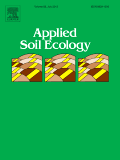
APPLIED SOIL ECOLOGY
Illuminating the Role of Soils in Ecosystem ServicesApplied Soil Ecology, published by Elsevier, is a premier journal dedicated to advancing the field of soil ecology through rigorous research and innovative methodologies. With an impressive impact factor and a consistent placement in the Q1 quartile across various categories including Agricultural and Biological Sciences, Ecology, and Soil Science, this journal underscores its significance in the scientific community. The journal's scope encompasses critical areas such as soil biology, microbial ecology, and the role of soils in ecosystem services, aiming to foster collaboration and knowledge exchange among researchers, professionals, and students. The convergence of research efforts from 1994 to 2024 highlights its commitment to maintaining current and relevant discourse within the field. While open access options are not available, the quality and depth of the articles published ensure that the latest findings and discussions are accessible through institutional subscriptions. With a strong focus on empirical studies and applied research, Applied Soil Ecology is an essential resource for anyone interested in the complexities of soil ecosystems and their impact on the environment.
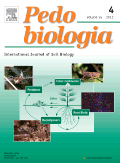
PEDOBIOLOGIA
Fostering Interdisciplinary Dialogue in Soil ResearchPEDOBIOLOGIA, published by Elsevier GmbH, is a prestigious journal dedicated to advancing the fields of Ecology and Soil Science. Renowned for its authoritative contributions to understanding soil biology and its ecological implications, PEDOBIOLOGIA has maintained a strong impact within the academic community, evidenced by its Q2 ranking in both Ecology, Evolution, Behavior and Systematics and Soil Science categories in 2023. The journal has a broad scope that encompasses fundamental and applied research on the interactions between soil organisms and their environment. Since its inception in 1977, it has provided vital insights into the biological functions of soil, serving as a crucial resource for researchers, professionals, and students alike. Although not an Open Access journal, its publications are accessible through various academic libraries, ensuring that cutting-edge research continues to be available to a global audience. Located in the vibrant academic hub of Munich, Germany, PEDOBIOLOGIA not only emphasizes the importance of soil ecosystems but also fosters interdisciplinary dialogue, making it an essential platform for innovative studies in the field.
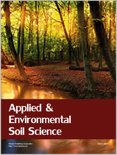
Applied and Environmental Soil Science
Uncovering vital insights for sustainable soil and environmental practices.Applied and Environmental Soil Science, an esteemed journal published by HINDAWI LTD, focuses on disseminating high-quality research in the fields of soil science and environmental applications. With an ISSN of 1687-7667 and an E-ISSN of 1687-7675, this open-access journal has been a vital resource for the academic community since its inception in 2009. As of 2023, it holds a commendable position in the Q2 category for both Earth-Surface Processes and Soil Science, highlighting its impact in these crucial disciplines. The journal’s rankings further affirm its significance within the field, being placed 61st in Earth and Planetary Sciences and 58th in Agricultural and Biological Sciences. Researchers and practitioners alike benefit from the collaborative platform it offers for sharing innovative studies essential for sustainable soil management and environmental integrity. With a focus on advancing knowledge and fostering interdisciplinary dialogue, Applied and Environmental Soil Science stands as a crucial pillar for scholars and professionals dedicated to addressing the pressing challenges of soil and environmental health.